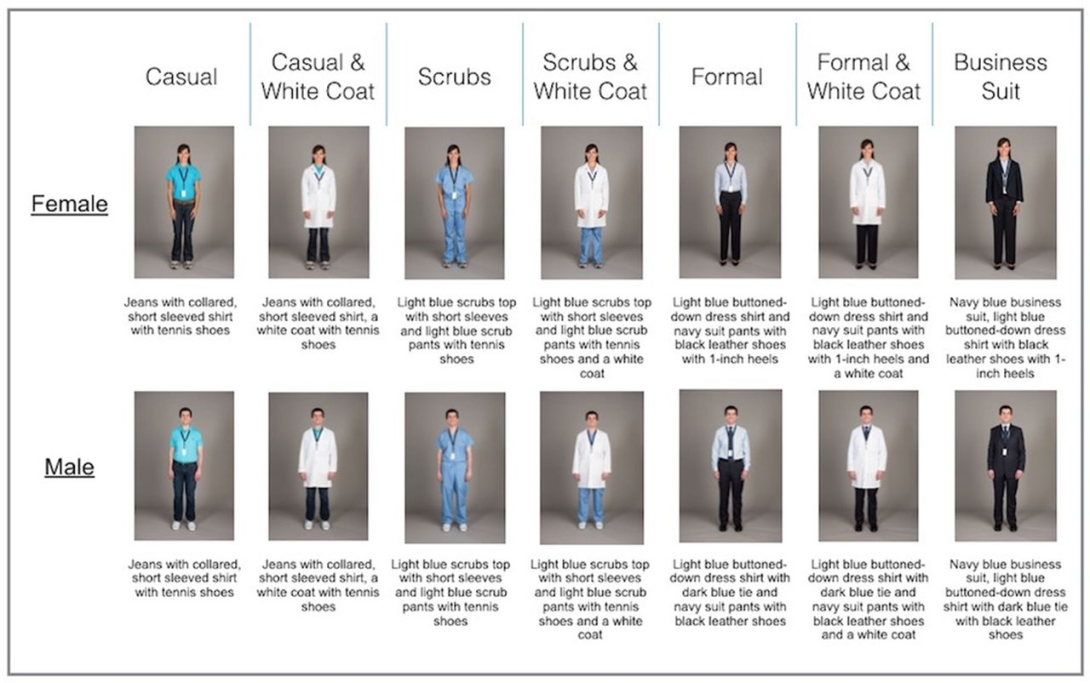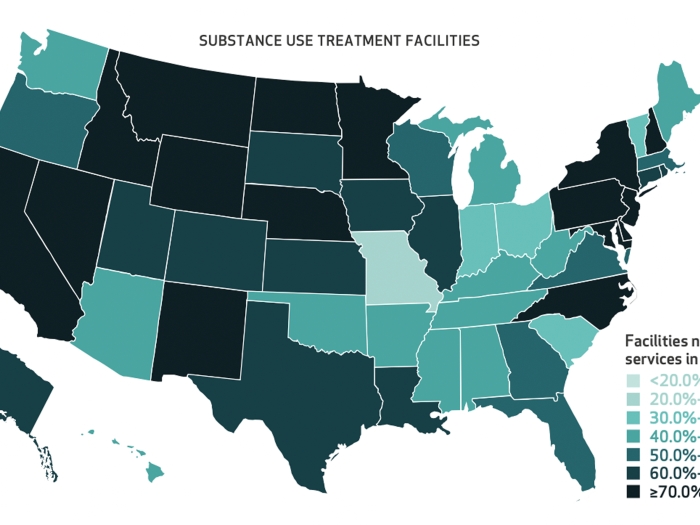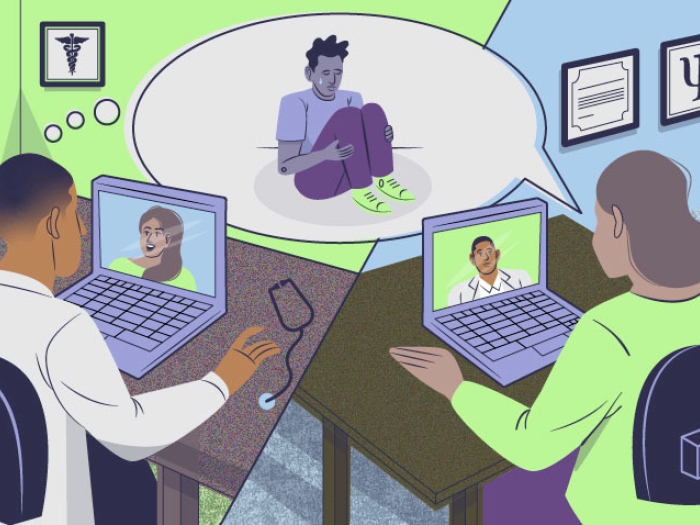More than 4,000 patients have spoken: They prefer physicians in business attire and a white coat, or at least scrubs and a white coat. And the findings aren’t just about fashion.
7:00 AM
Author |

Physicians may want to dig a little deeper into their closets, or grab their white coats on the way out of the operating room, if they want patients to view them favorably, according to the largest-ever study of patient preferences for doctors' attire.
ASK ALEXA: Add the Michigan Medicine News Break to your Flash Briefing
In fact, what medical doctors wear may matter more than most doctors — or even patients — might think, say the researchers behind the new paper in BMJ Open.
Based on the work, researchers call for more hospitals, health systems and practice groups to look at their dress standards for physicians or to create them if needed.
Just over half of the 4,062 patients surveyed in the clinics and hospitals of 10 major medical centers said that what physicians wear is important to them — and more than one-third said it influences their satisfaction with their care. Patient preferences matter in part because hospitals are paid by the Centers for Medicare and Medicaid based in part on scores on patient satisfaction surveys.
"Professional dress on Wall Street, law and nearly every other industry is relatively clear — and it typically mirrors what applicants would wear to their job interview," says Christopher Petrilli, M.D., lead author of the study and an assistant professor of hospital medicine at the University of Michigan Medical School, who worked in finance before entering medicine.
"In medicine, the dress code is quite heterogeneous, but as physicians we should make sure that our attire reflects a certain level of professionalism that is also mindful of patients' preferences."
Patients' views on physician attire
The study also asked patients to look at pictures of male and female physicians in seven different forms of attire, and to imagine them in both inpatient and outpatient clinical settings. For each photo, they rated the providers on how knowledgeable, trustworthy, caring and approachable the physician appeared, and how comfortable the attire made the patient feel.
MORE FROM THE LAB: Subscribe to our weekly newsletter
The options were:
-
Casual: Short-sleeved collared shirt and jeans with tennis shoes, with or without white coat
-
Scrubs: Blue short-sleeved scrub top and pants, with or without white coat
-
Formal: Light blue long-sleeved dress shirt and navy-blue suit pants, with or without white coat, with black leather shoes with one-inch heels for women and black leather shoes for men, and a dark blue tie for men
-
Business suit: Navy-blue jacket and pants with the same dress shirt, tie and shoes as in the "formal" option, without white coat
Formal attire with a white coat got the highest score on the composite of five measures and was especially popular with people over age 65. It was followed by scrubs with a white coat, and formal attire without a white coat.
As physicians we should make sure that our attire reflects a certain level of professionalism that is also mindful of patients' preferences.Christopher Petrilli, M.D.
Variation by specialty, setting and region
When asked directly what they thought their own doctors should wear 44 percent said the formal attire with white coat, and 26 percent said scrubs with a white coat.
When asked what they would prefer surgeons and emergency physicians wear, scrubs alone got 34 percent of the vote, followed by scrubs with a white coat with 23 percent.
The results were largely the same for physicians of either gender except for male surgeons. Patients tended to prefer that they go with formal wear, without a white coat.
The setting of care mattered, too. Sixty-two percent agreed or strongly agreed that when seeing patients in the hospital, doctors should wear a white coat, and 55 percent said the same for doctors seeing patients in an office setting. The percentage preferring a white coat fell to 44 percent for emergency physicians.
The surveys were conducted during business hours on weekdays, and the researchers also asked patients what doctors should wear when seeing patients on weekends. In this case, 44 percent said the short-sleeved outfit with jeans was appropriate though 56 percent were neutral or disapproved of such a look, even on weekends.
SEE ALSO: The More Doctors Interact, the Better Their Patients Do
Interestingly, patients in the Northeast and Midwest were less insistent on white coats and formal attire — 38 percent and 40 percent preferred it in these regions, compared with 50 percent in the West and 51 percent in the South. Northeasterners were more than twice as likely as Southerners to prefer scrubs alone for surgeons.

Importance for patient satisfaction
Before launching the study that led to the new paper, the researchers reviewed the medical literature for other studies on this topic, and published their findings three years ago. They also contacted top hospitals across the country and found that only a few had formal guidelines for physician attire.
"Given the size, methodological rigor and representativeness of these data, local, nuanced policies addressing physician attire should be considered to improve the patient experience," says Petrilli, who treats patients at Michigan Medicine and at the VA Ann Arbor Healthcare System. He is a member of the U-M Institute for Healthcare Policy and Innovation.
Although studies have shown that while physicians' white coats, neckties and sleeves harbor infectious organisms, leading some countries to require physicians' arms to be "bare below the elbow," no studies have shown actual transmission of infection to patients through contact with physician attire, researchers note.
Still other research has suggested that physicians may be more attentive to tasks when wearing their white coats, perhaps increasing patient safety.
"Patients appear to care about attire and may expect to see their doctor in certain ways. Which may explain why even white lab coats received a high rating for 'approachability' — patients may see a white coat similar to a physician's 'uniform' and may similarly also expect formal attire in most settings," notes Petrilli, also a member of the U-M/VA Patient Safety Enhancement Program.
"Patients don't always have the opportunity to choose their doctor. In this era of appropriately increased focus on patient centeredness and satisfaction, physician attire may be an important, easily modifiable component of the patient care experience."
For consistency, and to keep other factors from influencing ratings, all the physicians shown were young, slender and Caucasian. Patients were approached in the outpatient waiting rooms of general medicine and specialty clinics and nonsurgical inpatient units. About two-thirds of the surveys were completed by inpatients, and the sample was 71 percent white and 65 percent male, with 70 percent having attended some college or having a college degree.
In addition to Petrilli, the study's authors were senior author Vineet Chopra, M.D., M.Sc., an associate professor at U-M, IHPI and PSEP member, and chief of the Division of Hospital Medicine, PSEP director and IHPI member Sanjay Saint, M.D., M.P.H., PSEP staff Latoya Kuhn and Ashley Snyder, and Joseph Jennings, M.D., of Georgetown University and Andrew Caruso, M.D., of Baylor College of Medicine.

Explore a variety of healthcare news & stories by visiting the Health Lab home page for more articles.

Department of Communication at Michigan Medicine
Want top health & research news weekly? Sign up for Health Lab’s newsletters today!





